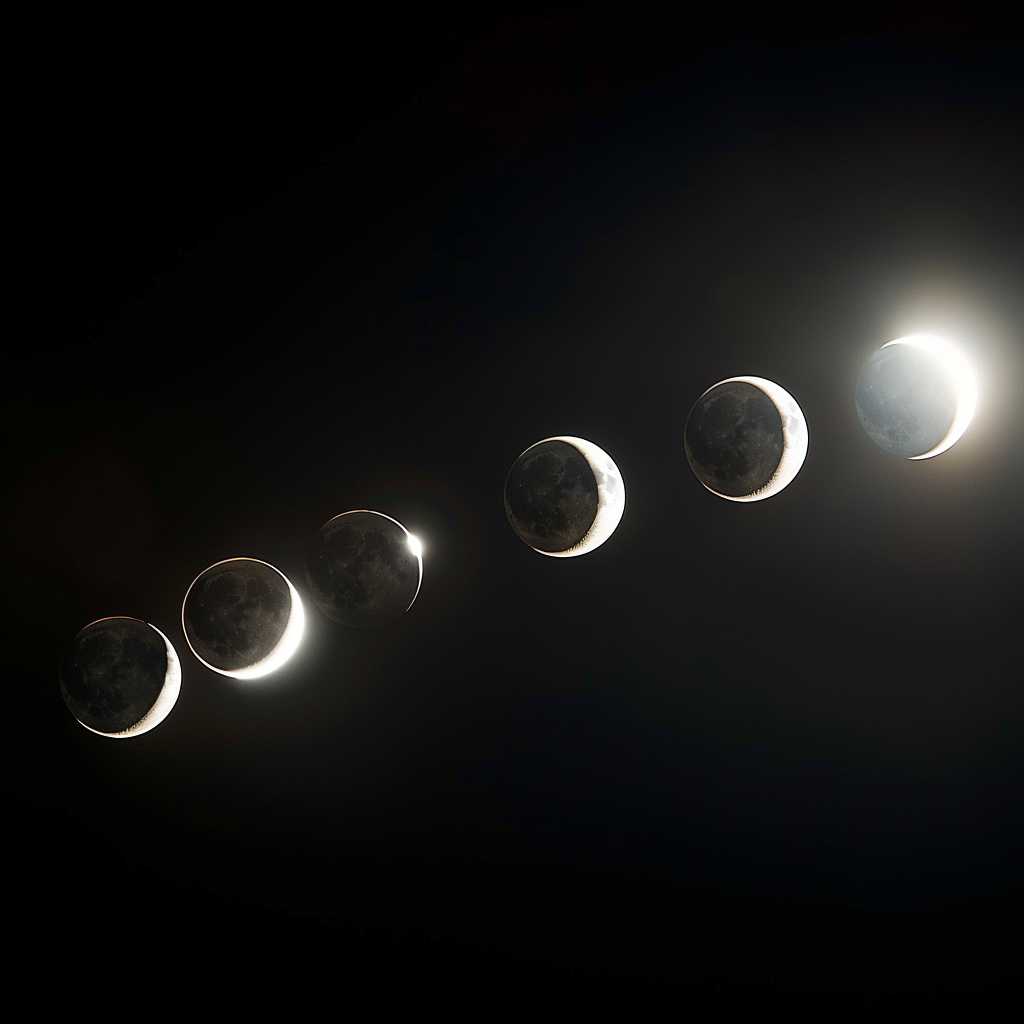# The Science and Path of Solar Eclipses: An Astronomical Phenomenon
Solar eclipses captivate spectators around the world with their rare and dramatic displays in the sky. This celestial phenomenon occurs when the moon passes between the Earth and the sun, thereby obscuring the sun’s light either partially or completely. Understanding the path of a solar eclipse is crucial for both amateur and professional astronomers who desire to observe this event fully.
Introduction to Solar Eclipses
A solar eclipse happens when the alignments of the sun, moon, and Earth are precise enough that the moon’s shadow falls upon Earth’s surface. It is important to distinguish between solar eclipses and lunar eclipses; the latter occur when Earth is positioned directly between the sun and the moon, casting a shadow on the moon itself.
How Solar Eclipses Occur
The occurrence of a solar eclipse is a reality of celestial geometry. Three main types of solar eclipses are experienced on Earth: total, partial, and annular. A total solar eclipse occurs when the moon completely covers the sun, as observed from Earth. During this time, the darkest part of the moon’s shadow, called the umbra, falls on Earth. If you are within this path, you will experience a brief period of darkness in the middle of the day.
Partial solar eclipses happen when only part of the sun is obscured by the moon. In such a case, viewers on Earth see the sun with a portion ‘bitten off’. Conversely, an annular eclipse happens when the moon is too far from Earth to completely cover the sun, resulting in a ring-like appearance known as the “ring of fire.”
The Path of Totality: Tracking Eclipse Routes
The path of totality is a significant aspect of solar eclipses; it’s the strip of land over which observers will see a total solar eclipse. Its width can vary typically from 50-100 miles and can travel across continents and oceans. The path is determined by several factors including the distances between Earth, moon, and sun, as well as their relative sizes.
Each eclipse has its unique path resulting from Earth’s rotation and orbital movements around the sun and the moon’s orbit around Earth. People located in areas on either side of this narrow path witness a partial solar eclipse, whereas observing a total eclipse requires being within this specialized area during the event.
Predicting Solar Eclipses
Predicting solar eclipses involves complex astronomical calculations accounting for movements of celestial bodies as they orbit one another. Astronomers use historical data and mathematical models to calculate these paths years or even decades in advance with remarkable accuracy. Historically, predicting eclipses was an achievement that marked scientific advancement, from ancient Babylonian astronomers to modern computational methods.
Viewing Solar Eclipses Safely
When viewing a solar eclipse, safety is paramount. Never look at the sun directly without proper protection as it can cause severe eye damage or blindness. Specialized solar viewing glasses designed to filter out harmful rays should be used. Alternatively, indirect methods like using pinhole projectors or viewing devices are safe.
Future Solar Eclipse Paths
Professionals and enthusiasts plan years ahead for an opportunity to observe solar eclipses due to their relatively infrequent occurrence at any given location on Earth. Future eclipse paths are carefully documented for major events like the upcoming eclipses that may draw global attention due to their proximity to densely populated areas.
Cultural Impact of Solar Eclipses
Eclipses have historically held significant cultural importance across civilizations. They’ve been seen as omens or powerful celestial events dictating important religious or royal activities. Today, they bring communities together in shared fascination and celebration of humanity’s place within the cosmos.
Mechanics Behind Solar Eclipses
At a deeper mechanical level, understanding the precise geometry involved in arranging such events requires knowledge of orbits, inclination angles, distances between celestial bodies, elliptical paths, and more—all influenced by gravitational interactions that astrophysics aims to accurately model.
The Role of Eclipses in Science
Beyond their stunning beauty, eclipses have played pivotal roles in scientific discovery—and continue to do so. They offer opportunities to study aspects like the solar corona or space-time bending illustrated by Einstein’s general theory of relativity.
Notes
Image Description: A sequence of images showing various stages of a solar eclipse viewed from Earth.: starting with partial coverage as seen through safety glasses; then full totality with visible solar corona; followed by stages moving back to partial coverage and full daylight conditions.
